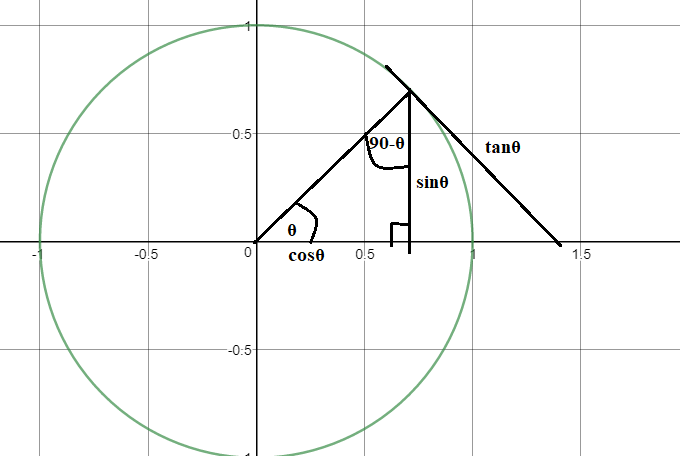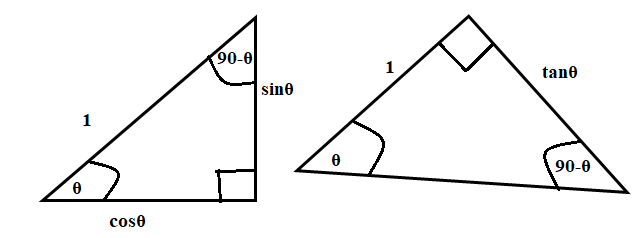Question #bf476
2 Answers
See below.
Explanation:
I'm not really sure what you mean by "rather mathematically". By the look of it, you are trying to show it in terms of the sides of a right angled triangle.
RHS:
Multiply by
Divide by
Cancel:
Yes, there is a way. You're on the right tracks, but there's also another way which takes us back to where the trigonometric functions come from.
Explanation:
We can prove this the way you are doing this.
The other way to prove this is to go back to where the trigonometric functions come from in the first place.
Take a unit circle. This is a circle, radius 1.

(all angles are measured in degrees from this point on).
Let us make a right-angled triangle from the origin, with the hypotenuse being the radius. This triangle has an angle
We will give this triangle a height of
This triangle has another non-right-angle, however. This angle is
The line adjacent to our original angle
The other thing we can do is to draw a tangent to the unit circle from the "top" of the triangle to the x-axis. We will call this length
Since a tangent meets a radius at a right angle, this gives us two triangles.

The first triangle on the left is our triangle with a radius 1 from the unit circle, and sides
Since both of these triangles all have the same angles (
We can find the scale factors of these triangles. By looking at the length between the angle
Since this is the same scale factor in both cases:
By multiplying both sides by

